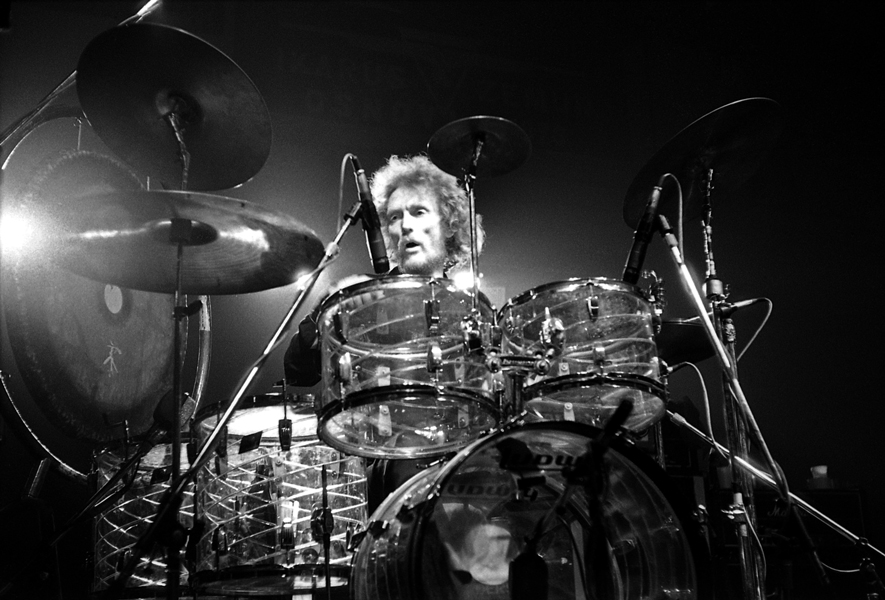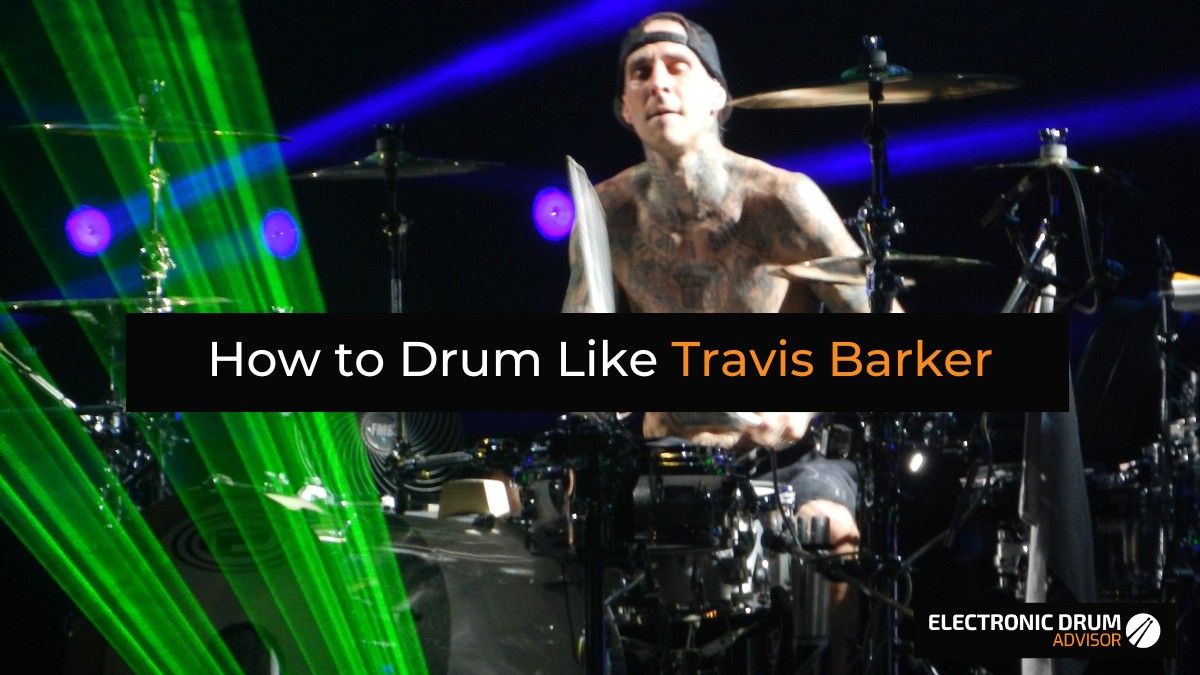Ginger Baker – One of the Most Distinctive Drummers of the ‘60s

This legendary U.K. drummer is best known for his work in Cream. However, Ginger Baker is much more than that. Originally a jazz drummer, he set new standards for popular music and ranks as one of the most important drummers of his time.
Baker started to play drums relatively late, at the age of 15. Still, his creativity and unique playing style made him one of the most distinctive drummers of the ‘60s. Long drum solos, the use of a double bass pedal, and the implementation of African rhythms into popular music are some of the first things that come to mind when we are talking about Baker’s legacy.
- Baker’s teacher was none other than jazz legend Phil Seamen.
- Baker eventually went on to form mainstream projects like ‘Cream‘ and ‘Blind Faith‘ with Eric Clapton.
- Having his sights set on jazz, Baker focused on returning to his musical roots, however, the following two decades weren’t very successful. Just a few short-living projects.
- Baker’s style of drumming bridged the gap between rock and jazz. Focusing on toms and bass while also providing enough complex texture made him one of the most influential drummers in the world.
- He was one of the first drummers to implement double bass drum pedals. He was also known for using four low-tuned toms, a high-tuned snare, and fast-rebounding thin/light sticks.
Bands and Projects
As already mentioned, Baker started playing relatively late, at the age of 15. However, the learning process didn’t take too much time and he started to play in local bands just a couple of years later. A hard-working nature played a big factor in this, but another important thing to mention is that Baker’s teacher was Phil Seamen, one of the best jazz drummers at the time.
So, you may presume that jazz was Baker’s main preoccupation. However, mainstream projects became more frequent, which eventually ended with one of the world’s very first supergroups, Cream.
The band was a trio, formed by Ginger, Jack Bruce, and Eric Clapton. The band became an instant success but didn’t manage to last more than a couple of years. Still, it became one of the most legendary trios in rock history, with a huge influence on many future musicians.
The next stop was Blind Faith, another supergroup. Once again, Ginger played with Clapton, while the other members were Ric Grech on bass and Steve Winwood on keyboards and vocals. The band released just one album and broke up soon after.
After two rock projects, he decided to come back to his roots and formed a jazz/fusion group, which included many big names of the time, including Phil Seamen, Graham Bond, Remi Kabaka, etc. Once again, Ginger’s group didn’t last for too long, just a couple of years. It was time for another project.
In 1971, Ginger moved to Lagos. His obsession with Africa was so big that he eventually decided to make a recording studio there. It was opened in 1973 and worked for several years. Besides Ginger’s projects, several big names were also recorded here, from all sides of the world. Of course, the most famous names are Paul McCartney and Fela Kuti.
The 80s weren’t very inspirational for Ginger. He lived mostly on a small olive ranch in Italy and didn’t work too much. Still, there were some notable projects, mostly studio recordings, where he worked as a session musician for bands like Hawkwind and John Lyndon’s Public Image Ltd.
The 90s weren’t very successful either. Just a couple of short-living projects, such as The Ginger Baker Trio, Masters of Reality, and BBM. The latter included Jack Bruce and Gary Moore.
In 2005, Cream was reunited for a series of concerts in the Royal Albert Hall and Madison Square Garden. Finally, Ginger Baker’s Air Force planned a reunion. However, the project has been put on hold due to Baker’s medical condition.
Genres and Playing Styles
It’s not easy to describe Baker’s playing style, especially when it comes to music genres. As I’ve already mentioned, he started as a jazz drummer. His teacher was the famous drummer of the time, Phil Seamen. So, you can hear his influence for sure. Jazz has always been Ginger’s main preoccupation, despite that we usually recognize him as a legendary rock drummer.
In the early days, he was heavily influenced by jazz drummers like Baby Dodds, Art Blakely, Elvin Jones, etc. That can be heard in his early works, but as he was becoming more related to rock bands, his style started to change drastically.
This is quite notable in Cream years. In rock music and other “loud” genres, there isn’t much space for graceful and fluid jazzy beats. Baker realized that pretty quickly, so he radically changed his playing style. Toms and bass were in the focus now. His lines became simpler but still fairly complex for an average rock drummer of the time.
Such a playing style filled a huge gap between simple rock beats and complex jazz lines, so he quickly became one of the most influential drummers around. Many rock drummers started to implement jazzy elements into typical rock beats, including Cozy Power, Alex Van Halen, Peter Criss, and others.
Still, probably the biggest influence on future generations was the use of double bass pedals. He started to use them after one of Duke Ellington’s Shows in 1966. A combination of new techniques and gear with his original flamboyant jazzy style of playing made him a pioneer of the metal genre.
Despite all those rock projects, Ginger has always remained a jazz drummer. At the time, it wasn’t a common thing to see such a skilled drummer in rock music. Besides the jazzy approach, which resulted in a pretty rhythmical and syncopation playing style, which was often pretty unpredictable, he was also one of the first drummers in popular music that started to implement elements from African music.
As a jazz drummer, he was familiar with these rhythms since the time he was Seaman’s pupil. Soon after, he showed big interest in traditional rhythms, not just African but from other parts of the world as well. These rhythms were already an integral part of jazz drumming, but Ginger was one of the first musicians to realize that they would work great in popular music as well. Once again, he was a real pioneer.
Considering all the innovative things that came with Baker, we can easily agree that he was one of the most creative and most extrovert drummers of the time. These days, you will hardly find a drummer who isn’t influenced by Ginger in some way, directly or indirectly.
Gear
Besides a distinctive playing style that is characterized by a lot of jazz flavor, Ginger Baker is also one of those drummers who changed the way we look at drum kits. Of course, the first thing that comes to mind is his use of double bass pedals. At the time, he was among the first drummers to use such a setup. These days, such a setup is pretty much a standard thing among metal drummers and other hard hitters.
Another thing that goes with this drummer is a quite big number of toms. He usually uses four of them, with different diameters. Still, the more interesting thing is their positions. They are positioned in a vertical fashion, with the shells perpendicular to the floor. That definitely isn’t common practice among drummers. A vast majority of them prefer toms to be oriented to the player.
Also, we should mention that he prefers snare to be tuned high, while bass drums and toms are tuned low.
For most of his career, Baker used Ludwig drums. He switched to Drum Workshop in the late ‘90s, though the setup remained largely the same. All cymbals are made by Zildjian.
The current setup consists of four toms, all with different sizes (10″ × 8″, 12″ × 9″, 13″ × 10″, 14″ × 12″). Of course, double bass drums are his trademark, 20 inches on the right and 22 inches on the left foot. Other than that, things are pretty typical – DW Craviotto snare, four cymbals, one hi-hat, etc.
Finally, it’s good to know that he usually plays with fast-rebounding sticks, which are thin and light. He currently uses Zildjian 7A Ginger Baker signature sticks.
Photo by Zoran Veselinovic – https://www.flickr.com/photos/56492970@N07/5569389637/, CC BY-SA 2.0, https://commons.wikimedia.org/w/index.php?curid=14759446







